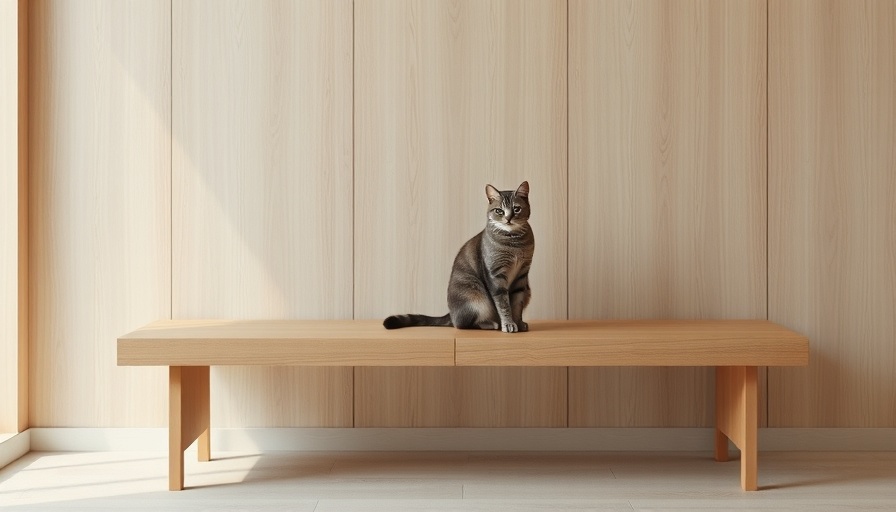
How Tennessee's Green Hills Residence Sparks Debate in the Architecture Community
The recent unveiling of the Green Hills Residence in Tennessee, designed by architect Price Harrison, has generated notable discussions in the architectural space. With its unique stucco finish and an engaging open-air courtyard, it positions itself as a fresh take on modern residential design. Yet, despite its modern appeal, the structure was met with mixed reactions from the public, leading to a critical debate about aesthetics and functionality in home architecture.
Public Reaction: A House Divided
Online responses to the Green Hills Residence reveal a palpable split in opinion; while some admire its design, others dismiss it as a “blot on an otherwise pretty landscape.” Comments like “where is the damn art?” echo a sense of longing for more visual impact and cultural engagement in modern homes. This debate mirrors broader conversations around modernism and aesthetics, where the clash between traditional and contemporary designs often produces intense reactions.
The Art of Architecture: Balancing Form and Function
One essential aspect of architectural design lies in balancing the visual appeal of a structure with its purpose. The Green Hills Residence highlights this notion through its art-centric interior layout meant to showcase artwork prominently. Yet, the criticism regarding its external appearance raises questions: How important are aesthetics in residential spaces? Can a house's exterior truly detract from its internal purpose? These inquiries are not just limited to this Tennessee home but resonate across the architectural landscape, especially as communities strive to maintain visual coherence amidst urban development.
The Historical Perspective: Modernism and Its Critics
The critiques of the Green Hills Residence also bring to light a historical context where modernism faced fierce opposition. Commentators in the architectural community have drawn comparisons to past movements where figures like Stalin and Hitler attempted to suppress progressive architectural styles. They argue that today’s criticisms are perhaps less drastic but still indicative of resistance to change. This perspective encourages home and business owners to reevaluate their views on modernist architecture, which often faces scrutiny for not blending seamlessly into traditional settings.
Looking Ahead: Opportunities in Architectural Innovation
With each new architectural project comes the potential for innovation and community discourse. As homeowners and business owners navigate their decisions, they hold the power to embrace modern designs that challenge conventional aesthetics while promoting community engagement. The reactions to the Green Hills Residence may serve as a catalyst for further exploration into architecture that reflects and amplifies local culture while daring to be different.
Building Community Through Design
The relevance of architecture extends beyond mere structural integrity; it captures and communicates community identity. As evidenced in the ongoing dialogue surrounding the Green Hills Residence, architectural projects like these can transform neighborhoods and enhance engagement among community members. Future designs should consider the social implications of architecture—how they can invigorate local culture and foster a sense of belonging that transcends just bricks and mortar.
In conclusion, the debates surrounding modern architecture, exemplified by the Green Hills Residence, highlight a vibrant discourse about design’s role in society. As homeowners and business owners engage with these conversations, they can play an integral role in shaping a built environment that balances innovation with tradition. It's time to rethink where architecture stands in the community and how it can evolve to meet contemporary needs. Join the conversation and explore the potential of architectural innovation.
 Add Row
Add Row  Add
Add 




Write A Comment